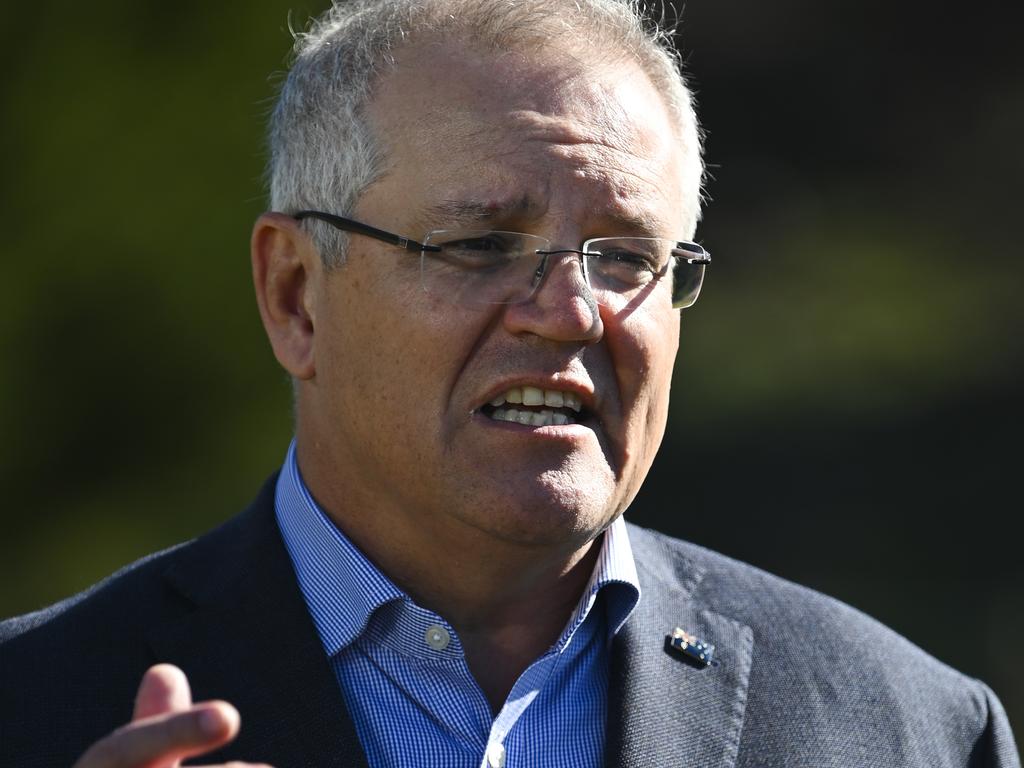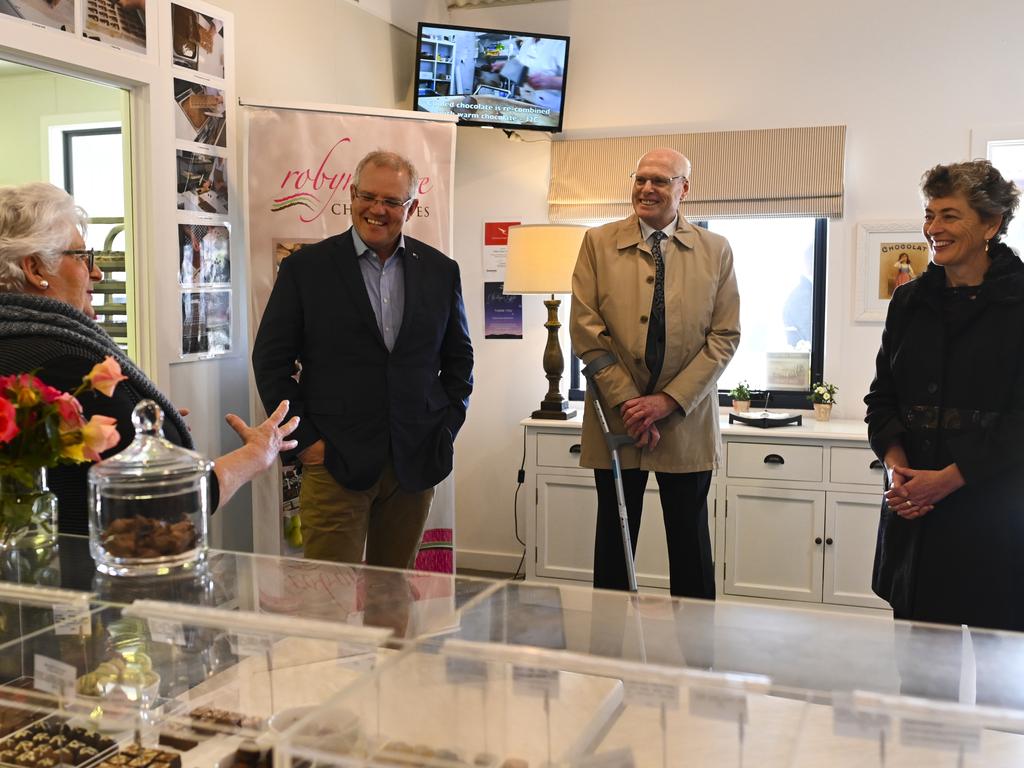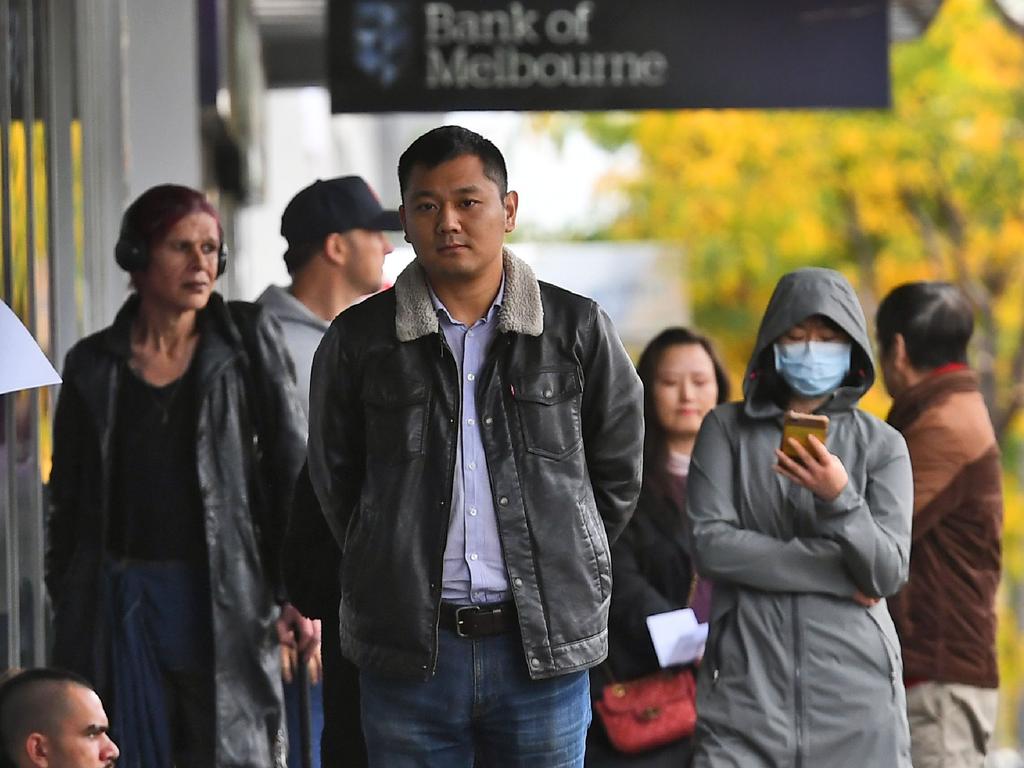Prime Minister Scott Morrison warns to brace for five years of economic pain
Aussies should brace for up to five years of pain as the economy gets “off the medication” of handouts, the PM will warn in a key speech.
Scott Morrison will pledge to get the economy out of the intensive care unit with a grim warning that companies need to “get off the medication’’ of handouts like JobKeeper.
The brutal message is set to dash hopes that the Prime Minister will bow to pressure and extend the wage subsidy scheme to more workers who missed out on the $1500 fortnightly payments.
The Prime Minister will outline his plans in a speech at the national press club on Tuesday focused on workplace reform, TAFE and training. But in the short term his simple message is: expect more pain.
MORE: Follow the latest virus news
MORE: How under 30s have screwed themselves
“At some point you’ve got to get your economy out of ICU,” he is expected to say.
“You’ve got to get it off the medication before it becomes too accustomed to it.
“We must enable our businesses to earn our way out of this crisis. That means focusing on the things that can make our businesses go faster.
But he will outline a new workplace reform agenda that could offer workers more flexibility in the post-COVID-19 economy, including for women who have been hit hard by the shutdowns.

Mr Morrison will warn Australians that the road map to recovery could last as long as three to five years and unemployment will get worse before it gets better.
Mr Morrison’s speech follows revelations that demand for JobKeeper is much lower than expected and is now supporting three million workers, not the six million jobs promised.
As a result, instead of costing $130 billion it will cost taxpayers $70 billion.
But Mr Morrison will firmly reject calls for the government to be at the centre of the economy with prolonged and higher spending.
“JobKeeper, Jobseeker, and our business cash flow measures, amongst others, have provided the vital economic bridge for so many businesses and workers,” he will say.
“More than five million Australians are already directly benefiting. At a now anticipated cost of more than $150 billion in just six months, all borrowed against future tax revenue, these supports can of course only be temporary.
“It was William Green, the leader of the American Federation of Labour during the Great Depression who said in 1934: “we cannot indefinitely support one sixth of our population on money borrowed against future taxes.”

The Prime Minister will warn emerging from the COVID-19 shutdown is riskier than the lockdown itself.
“Success in this current phase will not be easy. It cannot be assumed. It will not be business as usual. Opening up will be harder than closing down,’’ he says.
“We will all have to retrain to live and work in a way that creates a sustainable COVIDSafe economy and society.
“All of us are in uncharted territory. There will be inconsistencies and frustrations. There will be trial and there will be error.
During this time we can also expect unemployment and underemployment to rise before it falls. Debt and deficits will rise sharply, as costs rise and revenues fall.”

The Prime Minister said the budget, now due in October will be stark.
“A historic deficit, which not for the crisis would now be in surplus. Debt rising above 30 per cent of GDP,’’ he is expected to say.
“Unemployment at around 10 per cent, Global trade expected to fall by up to one third.
“Arguably the most challenging environment this country has ever faced, outside of wartime.
“But we should remember that these difficult times are not the product of economic failure, but a global health pandemic. The problem was not the economy.”
Top of the Prime Minister’s agenda is overhauling the nation’s workplace relations laws to encourage bosses to start hiring staff again the economy reopens from the coronavirus lockdowns.
Mr Morrison said he wanted to “better co-ordinate the subsidies, loans and other sources of funding” for TAFE and training.
“Our national hospital agreement provides a good model for the changes we need to make. Incorporating national efficient pricing for training and activity-based funding models would be a real step forward,’’ he says.
“That is a system my government would be prepared to invest more in.”




